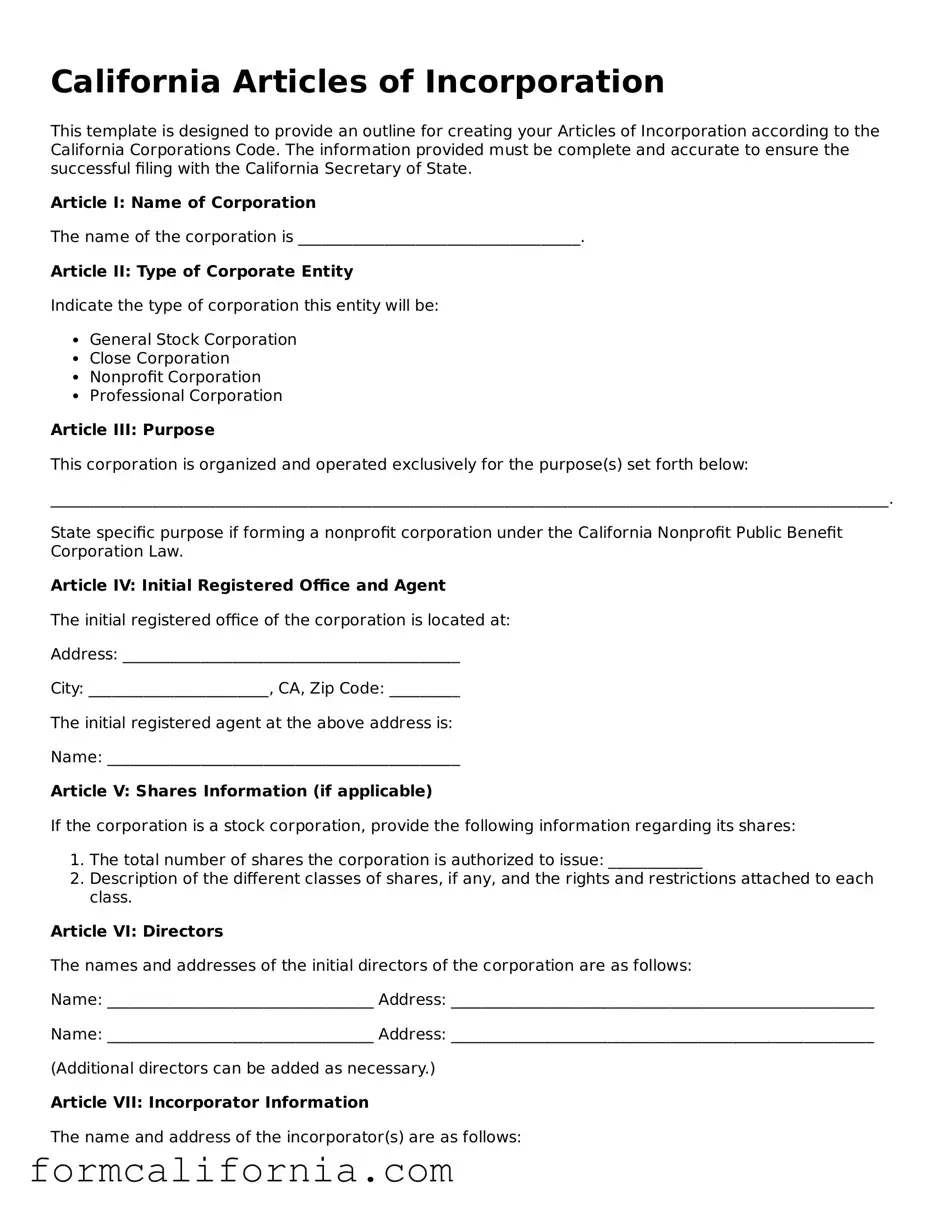California Articles of Incorporation
This template is designed to provide an outline for creating your Articles of Incorporation according to the California Corporations Code. The information provided must be complete and accurate to ensure the successful filing with the California Secretary of State.
Article I: Name of Corporation
The name of the corporation is ____________________________________.
Article II: Type of Corporate Entity
Indicate the type of corporation this entity will be:
- General Stock Corporation
- Close Corporation
- Nonprofit Corporation
- Professional Corporation
Article III: Purpose
This corporation is organized and operated exclusively for the purpose(s) set forth below:
___________________________________________________________________________________________________________.
State specific purpose if forming a nonprofit corporation under the California Nonprofit Public Benefit Corporation Law.
Article IV: Initial Registered Office and Agent
The initial registered office of the corporation is located at:
Address: ___________________________________________
City: _______________________, CA, Zip Code: _________
The initial registered agent at the above address is:
Name: _____________________________________________
Article V: Shares Information (if applicable)
If the corporation is a stock corporation, provide the following information regarding its shares:
- The total number of shares the corporation is authorized to issue: ____________
- Description of the different classes of shares, if any, and the rights and restrictions attached to each class.
Article VI: Directors
The names and addresses of the initial directors of the corporation are as follows:
Name: __________________________________ Address: ______________________________________________________
Name: __________________________________ Address: ______________________________________________________
(Additional directors can be added as necessary.)
Article VII: Incorporator Information
The name and address of the incorporator(s) are as follows:
Name: __________________________________ Address: ______________________________________________________
Article VIII: Bylaws
The initial bylaws of the corporation shall be adopted by the incorporator(s) at the first meeting of the Board of Directors. The power to amend or repeal the bylaws shall reside with the Board of Directors unless otherwise provided in the bylaws or the California Corporations Code.
Article IX: Indemnification
The corporation shall indemnify its directors, officers, employees, and agents to the fullest extent permitted by the California Corporations Code.
Signature and Date
The undersigned incorporator(s) declare(s) under penalty of perjury that the statements made in these Articles of Incorporation are true and correct.
_____________________________ _____________________________
Signature of Incorporator Date
Please note, filing requirements and fees are subject to change and should be verified with the California Secretary of State prior to submitting these Articles of Incorporation.
